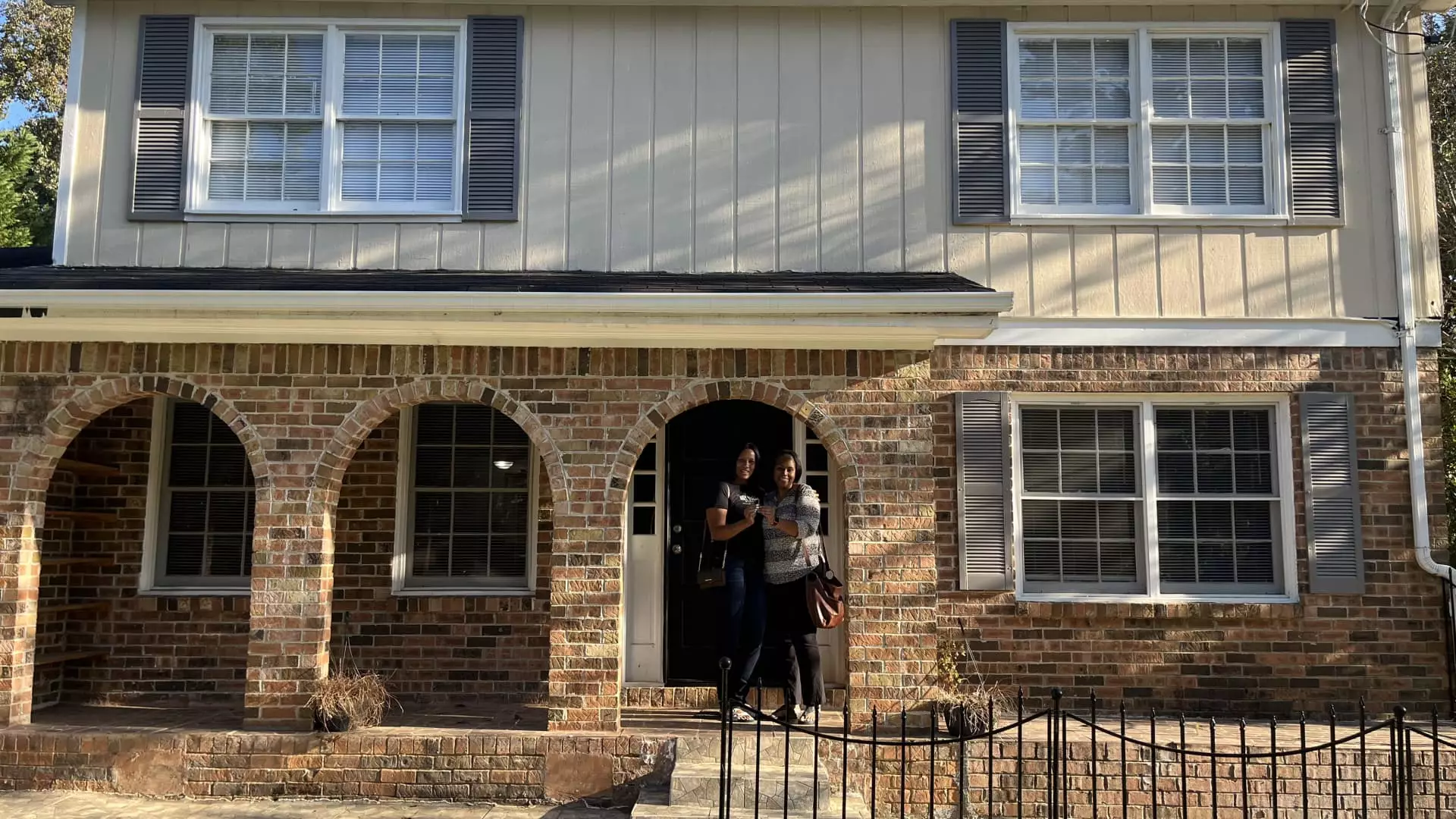The dream of homeownership remains a cherished aspiration for many Americans. However, the path to acquiring a home has become laden with obstacles, with a growing number of individuals feeling the weight of sky-high rental prices and stringent application processes. As housing costs continue to soar, ingenious solutions and supportive programs are emerging that seek to ease the burden on prospective homeowners, particularly for those navigating socioeconomic barriers.
Consider the experience of 30-year-old social worker Will Hunnicutt, who recently faced the daunting challenge of finding an affordable apartment in Atlanta. With many listings exceeding $3,000 in monthly rent, he quickly learned the harsh realities of the market—where a standard requirement of making three and a half times the rent stands as a formidable barrier. After a series of rejections, he discovered a more manageable option in a two-bedroom apartment offered by Roots, a real estate investment trust (REIT) focused on empowering its tenants towards homeownership.
This model not only provided Hunnicutt with a livable space at $1,050 per month but also linked his security deposit and on-time rent payments to investment opportunities. Through this innovative arrangement, he has already seen a return on his commitment, receiving quarterly rebates. This approach highlights an emerging trend where rental properties double as vehicles for wealth generation, ultimately aiming to uplift tenants into homeownership.
The broader narrative within the housing market reveals a troubling trend: aspiring homebuyers now need an annual income of approximately $113,520 to afford a typical home, which is about 35% higher than the national median income. Such financial demands exacerbate existing disparities, especially among populations already struggling to save for down payments. A troubling statistic from a recent CNBC survey showed that nearly 40% of non-homeowners cited insufficient savings as the primary barrier to purchasing a home.
The evolving landscape underscores a crucial need for targeted financial assistance. Various down payment assistance programs exist across the United States, provided by a range of sources including state agencies, non-profits, and financial institutions. However, eligibility often hinges on specific qualifications, leaving many potential buyers in the dark about available options.
Accessibility is at the heart of the matter. Programs designed to assist potential homebuyers generally focus on first-time buyers or those meeting income thresholds, yet many individuals are unaware of the breadth of these opportunities. Moreover, some initiatives emphasize serving “first-generation homebuyers,” recognizing the unique struggles faced by those whose families have not previously owned property.
For instance, the Alternatives Federal Credit Union in Ithaca, New York, offers valuable assistance ranging from $9,000 to $20,000, while programs in cities like Chicago provide similar support. These funds can significantly bridge the gap between renters and homeownership, especially in a system historically fraught with racial and economic inequality.
To qualify for assistance, many programs mandate participation in homebuyer education courses. These courses equip potential buyers with the knowledge needed to navigate the complex process of purchasing a home, ensuring they understand financial responsibilities and the implications of their choices. Such education can prevent future pitfalls and disillusionment, making the initiative a worthwhile investment for both providers and recipients.
Despite the availability of assistance, systemic barriers remain steadfast. Experts have noted that African Americans and other marginalized groups often face compounded challenges, including the ramifications of past discriminatory practices such as redlining. The importance of targeting programs toward this demographic cannot be overstated, as structural oppression continues to stifle efforts toward equity in homeownership.
A pervasive myth that deters many potential buyers is the notion that a 20% down payment is a requisite. This misconception fuels anxiety and a fear of inadequacy when, in reality, surveys indicate that the average down payment for first-time buyers is around 8%. Many loan options are available with significantly lower down payment requirements, which can include as little as 3.5% to 0%. However, buyers should consider the implications of lower down payments, such as private mortgage insurance (PMI), which can add to the overall cost of homeownership.
While financial resources have the potential to unlock doors, saving rather than investing is often recommended for short-term housing goals. Low-risk options, such as high-yield savings accounts or Treasury bills, can safeguard funds slated for home purchase, preserving them from market volatility.
As the landscape of homeownership continues to evolve, it is essential for both individuals and organizations to advocate for continued innovation in housing solutions. Programs like Roots are pioneering a shift in how we approach renting and buying, creating avenues for wealth-building and homeownership. By amplifying awareness of existing assistance programs and challenging outdated assumptions regarding down payments, we can collectively work toward a more equitable and accessible future for all aspiring homeowners. The road to homeownership may be fraught with challenges, but with the right resources and support, it is a journey that can be undertaken by many.

